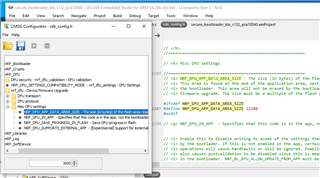I’m interesting particularly nRF52832 and nRF52840 (with and without bootloader)
So looking at flash layout with bootloader:
- is the section ‘Application data’ available for user data and how can find what is occupied and what and where not?
- How could find where exactly starts the ‘Free’ zone above ‘Appilcation’
- Unless could go with simple extrapolation from what is given as examples to what i not given - How could find memory addresses for combinations Chip/Sofdevices not listed in this Memory layout table ( I’m particularly interested nRF52832 with S112 and S113 and nRF52840 with S113 )
- If there is no bootloader in use – how looks the Memory layout – is there ‘Application Data’ or the ‘Free’ zone goes up to the top?
Thanks



